Apartment Gardening-How to Garden in a Small Space
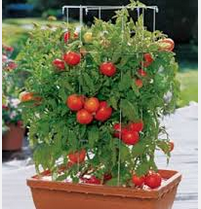
In many places, land is costly or scarce. Many homes and apartments include only a tiny porch, balcony, or patio. Others have a very small yard backing up to the neighbor's fence or the back side of another structure or a smaller part of a larger garden, such as a side alley. But even a single, well-placed container can add personality and color to a small space. Make the most of it.
Size up your space
Choose a purpose for your garden
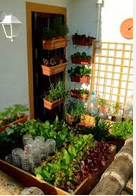
Clear the clutter.
If you are serious about making a garden here, try to find someplace else to store the mop. Many communities discourage the use of outdoor spaces as storage, anyway.
If you must store items in this area, such as if this is the only place for your bicycle, at least minimize the size and number of items stored. Discard or remove any items that are not necessary and give yourself space to organize and access the rest.
Use perspective.Place larger, brighter specimens closer to where you will be viewing them. Use more muted colors and smaller features (leaves and flowers) further away. This helps to give the illusion of a larger space.
Disguise the boundaries, or at least soften them.
If a fence or railing is the prominent feature in your garden area, it is very clear how small the space is. Instead, use plants as your boundary.
Use any plants peeking over the fence. If you can see a bit of a neighbor's shrub or tree over your fence, plant some lower plants in a grouping in front of it. Done right, it can look like all three plants are in your yard.
Use garden rooms.
You can't always divide the space if it is very small, but if you have a bit of space to work with (say, a small back yard rather than an apartment balcony) don't have all of it showing at once. Have a pathway to another space or area. A small space could be just right for a hidden treasure or for a place to hide out.Vary the path or patio material from one room to the next.
Make a space for people, especially the gardener.If a path is all you have room for, leave space for that. If you can, though, add a bench or chair.
Generally, the horizontal space is what's limited. Build a vertical garden, try a taller container planting, or train a climber up a wall or fence. You could also use window boxes or other wall- or fence-mounted containers, or a table or open shelving for more containers.
Create a focal point, or one focal point per room, if you have multiple rooms.This could be a colorful chair or bench, a water feature, or an especially showy plant or planting.
Tips for growing citrus indoors if you don't have a balcony at all:
In many places, land is costly or scarce. Many homes and apartments include only a tiny porch, balcony, or patio. Others have a very small yard backing up to the neighbor's fence or the back side of another structure or a smaller part of a larger garden, such as a side alley. But even a single, well-placed container can add personality and color to a small space. Make the most of it.
Size up your space
- Measure it physically. How much space do you really have?
- What is the climate and exposure in your space? Does it get a great deal of sun or shade?
- Look at the surroundings. Is there something you wish to cover up or conceal, such as a wall, fence, or utility box? Is there something you wish to preserve or incorporate, such as a nearby tree, a view, or other surrounding landscape?
- Check out the soil. If your small space has soil, is it clay or sand? Does it support other plants, even weeds?
Choose a purpose for your garden
- Is it purely decorative, or would you like to grow a few herbs or food plants?
- Decide where you will be when you look at this garden. Will you be out in it or will you mostly view it from indoors? One or two chairs and a small table can make a small garden an attractive retreat in which to sit and read.
Clear the clutter.
If you are serious about making a garden here, try to find someplace else to store the mop. Many communities discourage the use of outdoor spaces as storage, anyway.
If you must store items in this area, such as if this is the only place for your bicycle, at least minimize the size and number of items stored. Discard or remove any items that are not necessary and give yourself space to organize and access the rest.
Use perspective.Place larger, brighter specimens closer to where you will be viewing them. Use more muted colors and smaller features (leaves and flowers) further away. This helps to give the illusion of a larger space.
Disguise the boundaries, or at least soften them.
If a fence or railing is the prominent feature in your garden area, it is very clear how small the space is. Instead, use plants as your boundary.
Use any plants peeking over the fence. If you can see a bit of a neighbor's shrub or tree over your fence, plant some lower plants in a grouping in front of it. Done right, it can look like all three plants are in your yard.
Use garden rooms.
You can't always divide the space if it is very small, but if you have a bit of space to work with (say, a small back yard rather than an apartment balcony) don't have all of it showing at once. Have a pathway to another space or area. A small space could be just right for a hidden treasure or for a place to hide out.Vary the path or patio material from one room to the next.
Make a space for people, especially the gardener.If a path is all you have room for, leave space for that. If you can, though, add a bench or chair.
Generally, the horizontal space is what's limited. Build a vertical garden, try a taller container planting, or train a climber up a wall or fence. You could also use window boxes or other wall- or fence-mounted containers, or a table or open shelving for more containers.
Create a focal point, or one focal point per room, if you have multiple rooms.This could be a colorful chair or bench, a water feature, or an especially showy plant or planting.
Tips for growing citrus indoors if you don't have a balcony at all:
TOP ROW:
- Linsey of LLH Designs planted herbs in wine boxes.
- Increase growing space on a tiny balcony with this DIY pallet garden.
- Canning jars mounted to the wall are cute and practical.
- Possibly the cheapest and easiest gardening idea re-purpose an old shoe organizer.
- Here's another vertical solution. You could grow an entire salad.
BOTTOW ROW:
- Gutters easily mount to a wall or balcony railing for plants that don't have deep roots.
- This patio garden is made from a couple of galvanized tubs stacked together.
- How to make a container water garden.
- If you're looking to grow larger plants, these self-irrigating planters made from plastic tubs are a great idea.
- Find a balance between cozy and crowded. You want a garden, not a jungle.
- Unglazed terracotta (red clay) containers lose water quickly. A colorful glazed ceramic, plastic, or resin pot can be a design element in itself, and its contents won't dry out as quickly.
- Place containers up on feet and place trays underneath them to prevent staining the surface below. You should water containers until the water runs all the way through and out the bottom. If there is excess water in the saucer or tray after watering, do not pour it out, unless you have a plant that specifically should never stand in water. This can be used as a watering gauge: When tray is empty and dry, this is a signal to water with a few days or so.
- Consider portability. If this is an apartment, how long will you be staying there? Will you have to move plants to a new home?
- Don't forget indoor spaces if you want more plants than you can put outside. A sunnywindowsill can grow a variety of herbs, or a few well-placed houseplants can brighten things up. Did you know you can even grow corn indoors?
- Using empty crushed/diced/whole tomato cans to start off your young tomato plants is both efficient and poetic. Use a can opener to make a few small holes on the bottom of each can for drainage.
- Choose plants and containers together. You can match the color and design as well as the size. Ask at your nursery or look up how large a plant will get.
As someone who's obsessed with citrus fruit, I can't imagine not having fresh satsumas or Washington navels during the holidays. The scent of the blossoms alone will instantly put me in a good mood. For those in less ideal citrus climates, you need not feel left out! You can grow the dwarf varieties of these trees indoors and reap the benefits by following a few simple steps:1. Buy the right tree. Calamondin Orange, Improved Meyer Lemon, Ponderosa Lemon, Eureka Lemon, Persian or Bearss Lime, Eustis Limequat, Rangpur Lime, Otaheite Orange, Nippon Orangequat are all great varieties for beginning indoor cultivators.
Soil needs to be the correct pH and promote proper drainage. A range of 5-8 is best. You can get a pH test kit from your local nursery. A mixture of 1 part sand, 1 part peat and 1 part bark, perlite or vermiculite will serve your tree well. The soil should be loose enough to permit adequate but not excessive drainage. Any type of pot will do, but a 1" - 2" layer of gravel at the bottom of the pot will most readily promote drainage.
Citrus trees require a minimum of 5 hour of sunlight per day. Ideally, they should get 10-12. Supplemental lighting in the form of high intensity discharge lighting can be used to maximize your yield. One important thing to keep in mind is to slowly acclimate your trees if taking them from the outdoors to indoors for winter. Though acclimation isn't necessary if only bringing them in for a few days to prevent freezing.
Humidity. Citrus trees will drop their leaves if the humidity grows too low in an indoor environment. Ideal humidity should be at 45 - 50%. Use a humidifier, if necessary.
Regular watering is necessary for your tree's survival. When the top 2 inches of soil are dry, water (but don't soak) the tree. If water pools in the saucer, empty the saucer. During warm summer months, you may need to water as often as twice daily. During winter months, water much more sparingly.
Thanks for Visiting womenspage.in






-.jpg)
-.jpg)
-.jpg)
-.jpg)
-.jpg)
-.jpg)
-.jpg)
-.jpg)
-.jpg)
-.jpg)





































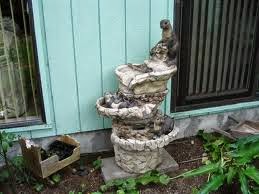
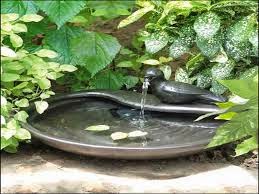
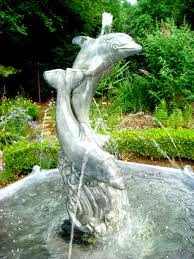




 Follow Us on Twitter!
Follow Us on Twitter!







